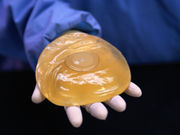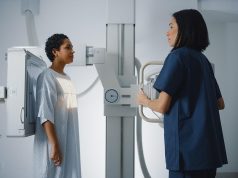Findings in IMLNs ID’d at implant-protocol breast MRI after oncoplastic surgery for breast cancer
WEDNESDAY, Oct. 28, 2015 (HealthDay News) — Among women with breast cancer and silicone implant reconstruction, internal mammary lymph nodes (IMLNs) identified at implant-protocol breast magnetic resonance imaging (MRI) are more likely to be benign than malignant, according to a study published in the November issue of Radiology.
Elizabeth J. Sutton, M.D., from the Memorial Sloan-Kettering Cancer Center in New York City, and colleagues examined the incidence of benign and malignant IMLNs at MRI among 923 women with a history of treated breast cancer and silicone implant reconstruction. Participants underwent postoperative implant-protocol MRI with or without position emission tomography (PET)/computed tomography (CT).
The researchers found that the median time from reconstructive surgery to the first MRI was 49 months. Overall, 37.6 percent of the women had IMLNs at MRI. The median short-axis measurement was 0.40 cm, while the median long-axis measurement was 0.70 cm. Adequate follow-up was reported for 22.4 percent of the patients; only one of the 207 IMLNs was malignant, with a positive predictive value (PPV) of 0.005. A total of 6.3 percent of participants (58 patients) underwent PET/CT; 67.2 percent of these had IMLN at MRI. Of the 58 patients with adequate follow-up, 20.7 percent had fluorine 18 fluorodeoxyglucose-avid IMLN, with a median standardized uptake value of 2.30; only one of these was malignant (PPV, 0.083).
“IMLNs identified at implant-protocol breast MRI after oncoplastic surgery for breast cancer are overwhelmingly more likely to be benign than malignant,” the authors write.
One author disclosed financial ties to BioClinica.
Full Text (subscription or payment may be required)
Copyright © 2015 HealthDay. All rights reserved.








